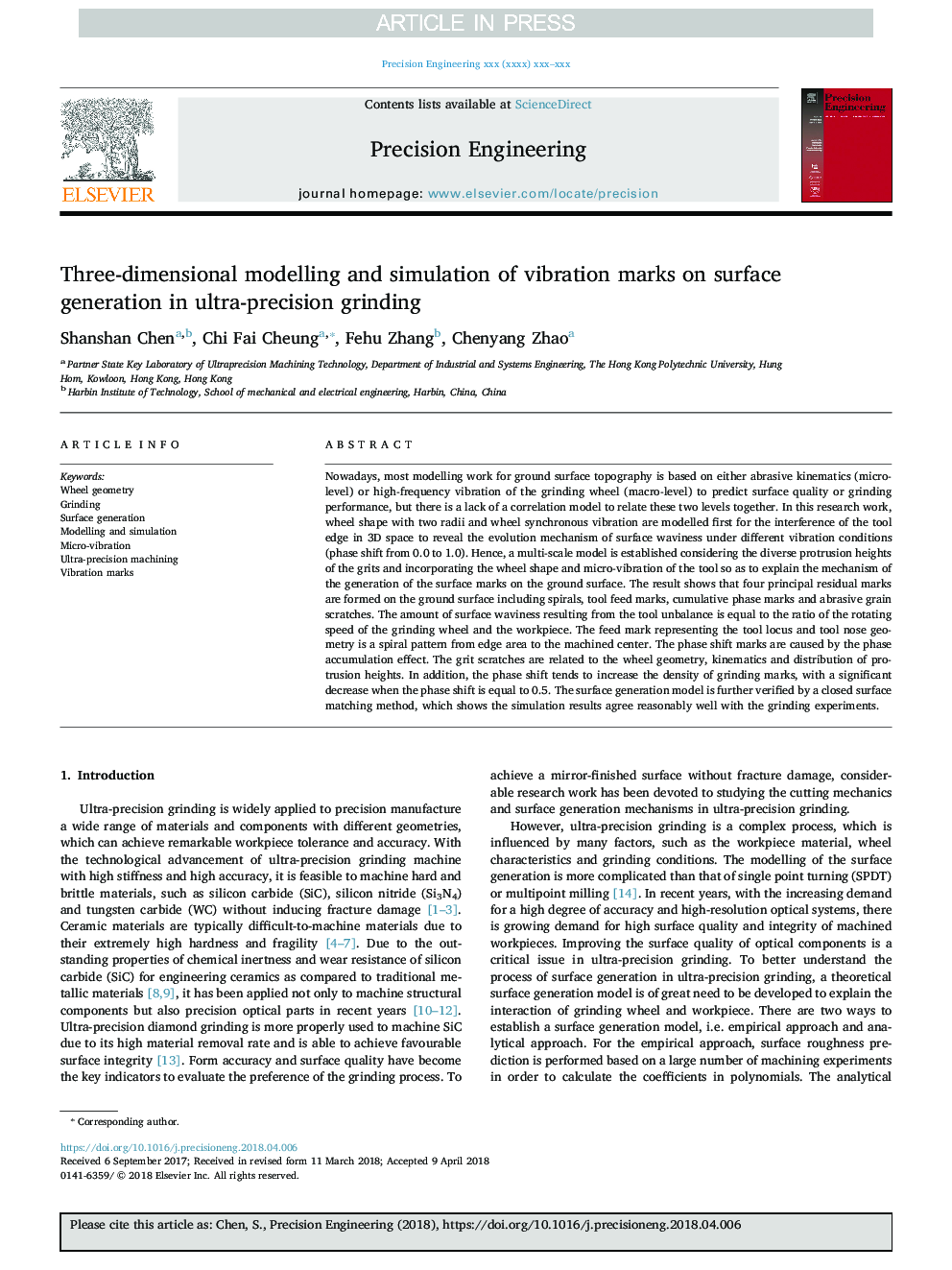| کد مقاله | کد نشریه | سال انتشار | مقاله انگلیسی | نسخه تمام متن |
|---|---|---|---|---|
| 7180365 | 1467835 | 2018 | 15 صفحه PDF | دانلود رایگان |
عنوان انگلیسی مقاله ISI
Three-dimensional modelling and simulation of vibration marks on surface generation in ultra-precision grinding
ترجمه فارسی عنوان
مدل سازی سه بعدی و شبیه سازی علائم لرزش در تولید سطح در سنگ زنی فوق العاده دقیق
دانلود مقاله + سفارش ترجمه
دانلود مقاله ISI انگلیسی
رایگان برای ایرانیان
کلمات کلیدی
هندسه چرخ، سنگ زنی، نسل سطحی، مدل سازی و شبیه سازی، لرزش میکرو، ماشینکاری فوق العاده دقیق، علائم لرزش،
موضوعات مرتبط
مهندسی و علوم پایه
سایر رشته های مهندسی
مهندسی صنعتی و تولید
چکیده انگلیسی
Nowadays, most modelling work for ground surface topography is based on either abrasive kinematics (micro-level) or high-frequency vibration of the grinding wheel (macro-level) to predict surface quality or grinding performance, but there is a lack of a correlation model to relate these two levels together. In this research work, wheel shape with two radii and wheel synchronous vibration are modelled first for the interference of the tool edge in 3D space to reveal the evolution mechanism of surface waviness under different vibration conditions (phase shift from 0.0 to 1.0). Hence, a multi-scale model is established considering the diverse protrusion heights of the grits and incorporating the wheel shape and micro-vibration of the tool so as to explain the mechanism of the generation of the surface marks on the ground surface. The result shows that four principal residual marks are formed on the ground surface including spirals, tool feed marks, cumulative phase marks and abrasive grain scratches. The amount of surface waviness resulting from the tool unbalance is equal to the ratio of the rotating speed of the grinding wheel and the workpiece. The feed mark representing the tool locus and tool nose geometry is a spiral pattern from edge area to the machined center. The phase shift marks are caused by the phase accumulation effect. The grit scratches are related to the wheel geometry, kinematics and distribution of protrusion heights. In addition, the phase shift tends to increase the density of grinding marks, with a significant decrease when the phase shift is equal to 0.5. The surface generation model is further verified by a closed surface matching method, which shows the simulation results agree reasonably well with the grinding experiments.
ناشر
Database: Elsevier - ScienceDirect (ساینس دایرکت)
Journal: Precision Engineering - Volume 53, July 2018, Pages 221-235
Journal: Precision Engineering - Volume 53, July 2018, Pages 221-235
نویسندگان
Shanshan Chen, Chi Fai Cheung, Feihu Zhang, Chenyang Zhao,
